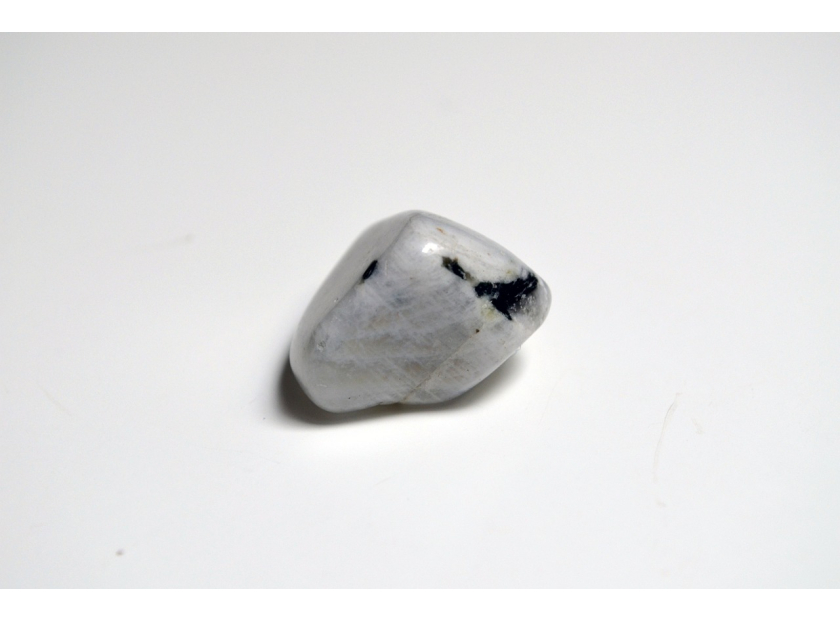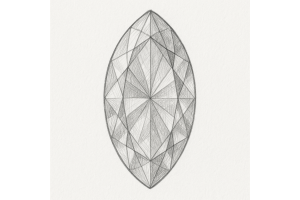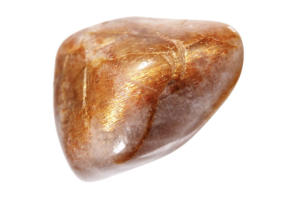GBP
/
GBP
/
Shipping to:
Currency:
How to Identify a Genuine Moonstone: A Complete Guide for Buyers
Moonstones have captivated jewellery enthusiasts for centuries with their ethereal glow and mystical allure.
However, with the market flooded with imitations, distinguishing a genuine moonstone from a fake can be challenging.
This guide will walk you through the essential characteristics and tests to help you identify an authentic moonstone.
Understanding Moonstone
Moonstone is a gemstone belonging to the feldspar group, renowned for its unique optical phenomenon known as adularescence—a soft, billowy light that appears to emanate from within the stone.
This effect results from light scattering between microscopic layers of feldspar minerals within the gem.
Key Characteristics of Genuine Moonstone
Adularescence: The Signature Glow
The hallmark of a real moonstone is its adularescence.
When light hits the stone, it should display a gentle, floating glow, typically in hues of blue or white.
This sheen should move across the surface as you tilt the stone, creating a captivating visual effect.
Colour and Clarity
Authentic moonstones come in various colours, including colourless, white, grey, peach, green, and brown.
The most valued specimens are those that are nearly transparent with a blue sheen.
Natural inclusions, such as tiny tension cracks known as "centipedes," are common and indicate authenticity.
However, excessive cloudiness or a lack of the characteristic glow may suggest a lower-quality or fake stone.
Texture and Temperature
Genuine moonstones have a smooth texture and feel cool to the touch, warming up slowly when held.
In contrast, imitations made of glass or plastic may feel warmer immediately and lack the substantial weight of natural gemstones.
Simple Tests to Identify Authenticity
Light Test
Hold the stone under a bright light source and gently tilt it.
Observe the movement of the adularescent glow across the surface.
A real moonstone will exhibit this dynamic sheen, whereas a fake may appear static or lacklustre.
Magnification Test
Using a jeweller's loupe, inspect the stone for natural inclusions like centipedes or tiny fissures.
The presence of these features often indicates a genuine moonstone.
Scratch Test (Proceed with Caution)
Moonstone has a Mohs hardness of 6 to 6.5, making it susceptible to scratching.
While it's not advisable to perform scratch tests at home, being aware of this characteristic can help you assess the stone's authenticity.
Common Imitations and How to Spot Them
Opalite
A common substitute for moonstone is opalite, a man-made glass that mimics the appearance of moonstone.
Unlike genuine moonstone, opalite lacks natural inclusions and the signature adularescence.
It often exhibits a more uniform, glass-like appearance.
Glass Imitations
Glass fakes may attempt to replicate the look of moonstone but usually lack the dynamic glow and may contain bubbles or swirl marks indicative of glass production.
Tips for Purchasing Genuine Moonstone
Buy from Reputable Sellers: Ensure you purchase from jewellers or dealers with good reviews and a solid reputation.
For a selection of authentic pieces, check out gemstone rings that feature genuine stones.
Ask for Certifications: Request any available certifications or detailed information about the stone's origin.
Understanding the differences between various gems can be helpful; for more insights, read about how diamonds compare to gemstones.
Trust Your Instincts: If a deal seems too good to be true, it probably is.
Authentic moonstones, especially high-quality ones, are valuable and priced accordingly.
When to Consult a Professional
If you're uncertain about a moonstone's authenticity, it's wise to consult a certified gemologist.
They can perform advanced tests and provide a definitive assessment.
Frequently Asked Questions
Is moonstone expensive?
The price of moonstone varies depending on its quality, size, and origin.
High-quality specimens with strong adularescence and minimal inclusions are more valuable.
Can fake moonstones still look attractive?
Yes, some imitations can be visually appealing.
However, they lack the unique optical properties and value of genuine moonstones.
Are all blue-sheened stones real moonstones?
Not necessarily.
While blue adularescence is a hallmark of high-quality moonstone, some imitations may attempt to replicate this effect.
It's essential to assess other characteristics to confirm authenticity.
How should I care for my genuine moonstone?
Moonstones are relatively soft and can be scratched easily.
It's advisable to store them separately from harder gemstones and clean them gently using warm, soapy water and a soft cloth.








